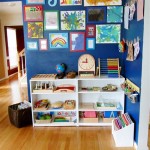How To Decorate a Counseling Office
A thoughtfully decorated counseling office can significantly impact the therapeutic process. The environment plays a crucial role in creating a safe, comfortable, and conducive space for clients to explore their thoughts and emotions. This article outlines key considerations and strategies for creating such a space.
Creating a Calming Atmosphere: The foundation of a welcoming counseling office is a calming atmosphere. Neutral wall colors, such as soft blues, greens, or grays, are recommended. These colors evoke feelings of tranquility and stability, unlike brighter, more stimulating colors that can be distracting or even anxiety-inducing. Avoid stark white, which can feel sterile and impersonal.
Furniture Selection and Placement: Comfortable seating is essential. Opt for upholstered chairs and sofas with supportive cushioning. Avoid overly formal or stiff furniture, which can create a sense of distance. Consider the size and layout of the office when arranging furniture. Ensure there is ample space for clients to move around comfortably and that the seating arrangement facilitates conversation. A small table for tissues and beverages can be a thoughtful addition.
Lighting Considerations: Natural light is ideal, but supplemental lighting is often necessary. Avoid harsh overhead fluorescent lighting, which can feel clinical. Instead, opt for soft, diffused lighting using lamps or strategically placed recessed lighting. Warm-toned light bulbs can contribute to a more inviting atmosphere.
Incorporating Natural Elements: Studies demonstrate the positive impact of nature on mental wellbeing. Incorporating natural elements, such as plants, can enhance the calming effect of the office. Choose low-maintenance plants that thrive in indoor environments. Natural materials like wood and stone can also contribute to a sense of groundedness.
Artwork and Decor: Artwork can add personality and warmth to the space. Select pieces that evoke a sense of peace and serenity. Abstract art, landscapes, or nature photography are good options. Avoid overly stimulating or potentially triggering imagery. Similarly, decorative items such as calming water features or small sculptures can enhance the overall aesthetic.
Sensory Considerations: Engage multiple senses to create a holistic experience. A calming scent, such as lavender or chamomile, can promote relaxation. Consider using an essential oil diffuser, but be mindful of client allergies or sensitivities. Soft background music can also enhance the atmosphere, but ensure it is instrumental and played at a low volume. Avoid using music with lyrics, which can be distracting.
Privacy and Confidentiality: Maintaining client privacy and confidentiality is paramount. Ensure the office is soundproofed to prevent conversations from being overheard. White noise machines can further enhance privacy. If using windows, consider blinds or curtains to ensure visual privacy. Clearly display confidentiality policies within the office.
Accessibility and Inclusivity: The office should be accessible to all clients, regardless of physical limitations. Ensure doorways and walkways are wide enough to accommodate wheelchairs and other mobility devices. Consider offering a variety of seating options to cater to different physical needs. Choose artwork and decor that reflects diversity and inclusivity.
Personal Touches: While professionalism is crucial, adding personal touches can make the space feel more inviting. These touches should be carefully chosen to avoid being distracting or overly personal. Small, tasteful items such as a framed quote or a small collection of books can add warmth and personality.
Regular Maintenance and Cleanliness: A clean and organized space is essential for creating a positive impression. Regularly clean and declutter the office. Ensure surfaces are free of dust and clutter. Replace wilting plants and maintain furniture in good condition. A clean and organized space communicates professionalism and respect for clients.
Cultural Sensitivity: Consider the cultural backgrounds of the clients served. Be mindful of how certain colors, symbols, or decorative items might be interpreted by different cultures. Creating a culturally sensitive space demonstrates respect and fosters a sense of trust.
Flexibility and Adaptability: The ideal counseling office is flexible and adaptable to the needs of different clients. Consider having different seating areas for individual, couple, and family therapy. Provide options for clients who prefer to sit on the floor or use alternative seating arrangements. The ability to adapt the space to individual needs demonstrates a commitment to client comfort and well-being.
Child-Friendly Spaces: If working with children, create a designated child-friendly area within the office. Include age-appropriate toys, games, and art supplies. Ensure the space is safe and free of potential hazards. Bright colors and playful decor can help create a welcoming environment for younger clients.
By thoughtfully considering these elements, practitioners can create a counseling office that promotes a sense of safety, comfort, and trust, ultimately enhancing the therapeutic experience for their clients.

Pin On Counseling Office Decor

Therapy Office Decor

Counseling Office Decor 7 Things To Consider Rio

Designing A Therapy Office Style By Mimi G

Counselor Office Decorating Ideas

Therapy Office Decor Ideas Brands

Small Office Space Design Therapy Decor The Couning Room

20 Snugtherapy Office Decor For Relaxing Room School Counseling

20 School Counselor Office Decoration Poster Counseling Wall

Crossfields Portfolio Williamson County Chiropractic Waiting Room Decor Medical Office Design
Related Posts







